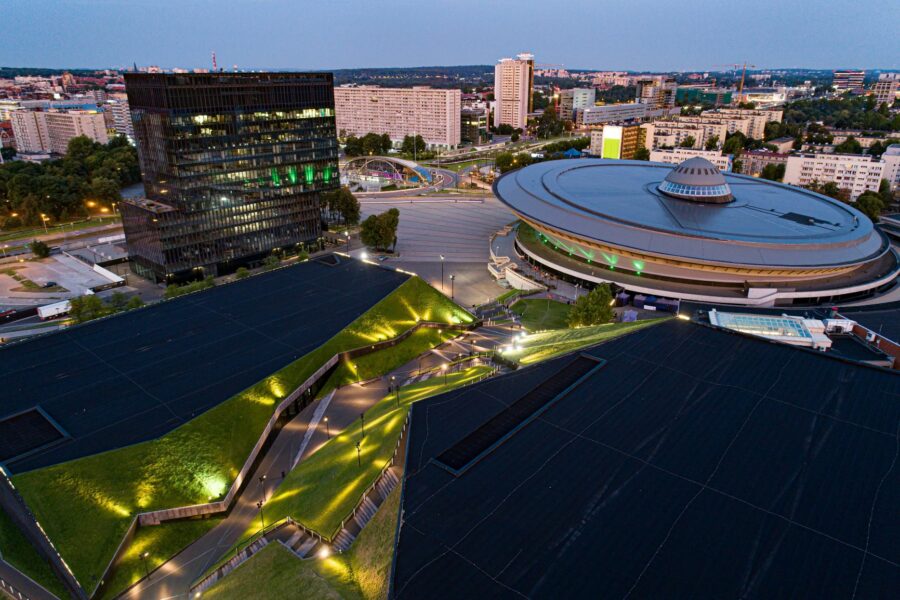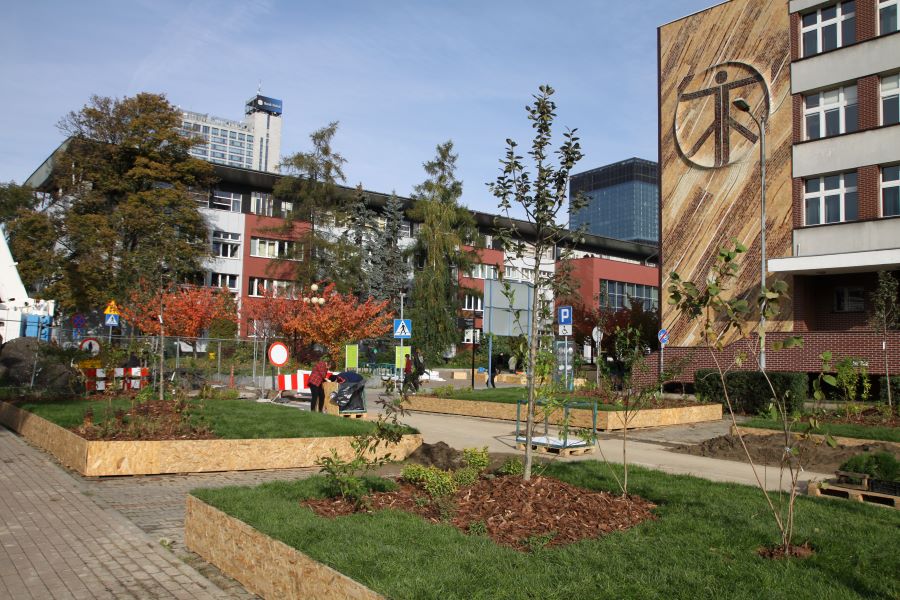Katowice | Photo by University of Silesia
Silesian universities have begun to diagnose their joint potential and analyse its usage possibilities. This initiative launched in October 2022 refers directly to the previously implemented collaboration of seven universities, thanks to which the city that they are based in, Katowice, has earned the title of the European City of Science 2024 (EMN 2024).
Data acquisition was underway until the end of January 2023 – the analysis of which is expected to contribute to the launch of a Green Science Zone in the city, along with a Network Science Centre. Data is also collected on scientific activities, education, promotion, science communication, and management processes.
Who is taking part in the project?
The potential of universities creating Academic Consortium Katowice – City of Science, is analysed as part of the project ‘Supporting university consolidation processes’ (grant agreement no. MEiN/2022/DIR/1761). The project involves:
- University of Silesia in Katowice
- Silesian University of Technology,
- Medical University of Silesia in Katowice,
- University of Economics in Katowice,
- Jerzy Kukuczka Academy of Physical Education in Katowice,
- Academy of Fine Arts and Design in Katowice,
- Karol Szymanowski Academy of Music in Katowice.
Researching the potential of universities, carried out by the project teams, will allow for:
- increase of societal influence of science and the level of internationalisation (team 1. – research excellence);
- development of a joint plan of teaching activities (team 2. – educational excellence);
- communication potential identification, as well as planning activities related to the European City of Science 2024 celebrations (team 3. – social responsibility of the universities and academic image of Katowice);
- development of a joint concept of the Green Science Zone and Network Science Centre (team 4. – science zone);
- carrying out analytic activities of university synergy (team 5. – analytics and other synergy effects).
Science communication
Work teams will analyse data about the carried out activities on science communication. Information will also be gathered on the unique scientific and teaching offerings that distinguish the Consortium members. The information will be supplemented with data from citizen science projects. Everything will be analysed by specialists in science communication to create a unique proposal for the European Science City 2024 programme. Results of activities will also allow for a development of a good communication practices catalogue for the use in the Consortium’s universities.
In 2022, activities were carried out near the Katowice campus of the University of Silesia, aimed at transforming the area of the Rawa valley into a more friendly and attractive place for members of the academic community and residents of Katowice | Photo by Katarzyna Stołpiec
Green Science Zone and Network Science Centre – key activities for EMN 2024
Consolidation measures will bring changes in the public space hosting universities in Katowice. The revitalised and restored Rawa River will be central to the planned Green Science Zone. The space will connect the university campuses, meeting the needs of the public for leisure activities and contact with science and nature. Work is currently underway, the results of which will be the first visualisations and concepts for changes to the space along the Rawa River.
The consolidation team responsible for that work is analysing the needs of future users of the Zone and looking at the proposals for the development of the area. The experience gained through the work will also allow for the development of design principles for public space at the Consortium’s university campuses. Analyses and surveys for the users of the space – students, PhD students and employees – are also planned.
The Zone will be connected to the Network Science Centre (SCN) – we see them as elements of Consortium’s university infrastructure cooperating with each other (buildings, research infrastructure, installations, exhibitions etc.). The elements of the Centre will provide the ability to interact with the results of scientists’ work, they also intend to allow for observation of their work. Visitors will have tan opportunity to ask questions, which will inspire further research (in line with the idea of initiating bottom-up research activities).
There will also be an opportunity to participate in citizen science research. The components of SCN will be realised based on the principles of Dublin Science Gallery (including exhibition variability, basing the exhibition on modern methods of science communication, realising science&art concept). SCN’s programme offer will also be built on the potential of all Consortium’s universities – the nature of this globally unique network will depend on the results of research and analysis carried out as part of the project in collaboration with national and foreign experts in science communication.
In the project, analyses are being conducted to assess the potential of universities in scientific and teaching activities carried out and the potential mutualisation of selected management processes. Data gathered in this way will contribute to fuller understanding of the position of Silesian science nationally and internationally. We also want the analysis results to inspire discussion on the possibility of good practises exchange between universities.







